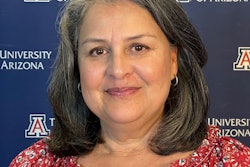USAID Gives $35 Million Grant for 10 U.S.-Mexico University Partnerships
WASHINGTON
The U.S. Agency for International Development has announced a
$35 million grant for 10 partnerships between universities in the United States and in Mexico as part of the Training, Internships, Exchanges and Scholarships program.
“These institutions not only impart knowledge that serves development, but also imparts cross-cultural understanding that is critical in addressing the problems of an often divided world,” says Adolfo A. Franco, assistant administrator of USAID.
The TIES initiative is an eight-year, $50 million collaborative program between the U.S. government, U.S. and Mexican educational institutions and the private sectors of both countries. The program is also a tool for enhancing the capability of both countries’ higher education institutions and should help Mexico benefit from the North American Free Trade Agreement.
Officials at the University of Texas at San Antonio and American University say training from these institutions will give Mexican participants the skills to respond more effectively to Mexico’s development challenges and opportunities.
The U.S. institutions that will be partnering with Mexican institutions are: American University; California State University-Fullerton; Duquesne University; Oregon State University; Southwestern University Law School; the University of Arizona; the University of Georgia; the University of North Texas; the University of Texas at San Antonio; and Western Illinois University.
This is the first time American University will be collaborating with a Mexican institution. The partnership emerged after Dr. Todd Eisenstadt, an assistant professor of government at AU, went to Mexico as an election observer in Oaxaca province. The state is one of the poorest in the country, with a very antiquated system of laws, says Eisenstadt. Immigration is becoming an escape valve for many Oaxaca residents.
“Immigrants are returning with less regard to indigenous customs, flexing their economic might in their hometown even as they are physically in the U.S.,” he says.
— By Shilpa Banerji
© Copyright 2005 by DiverseEducation.com















